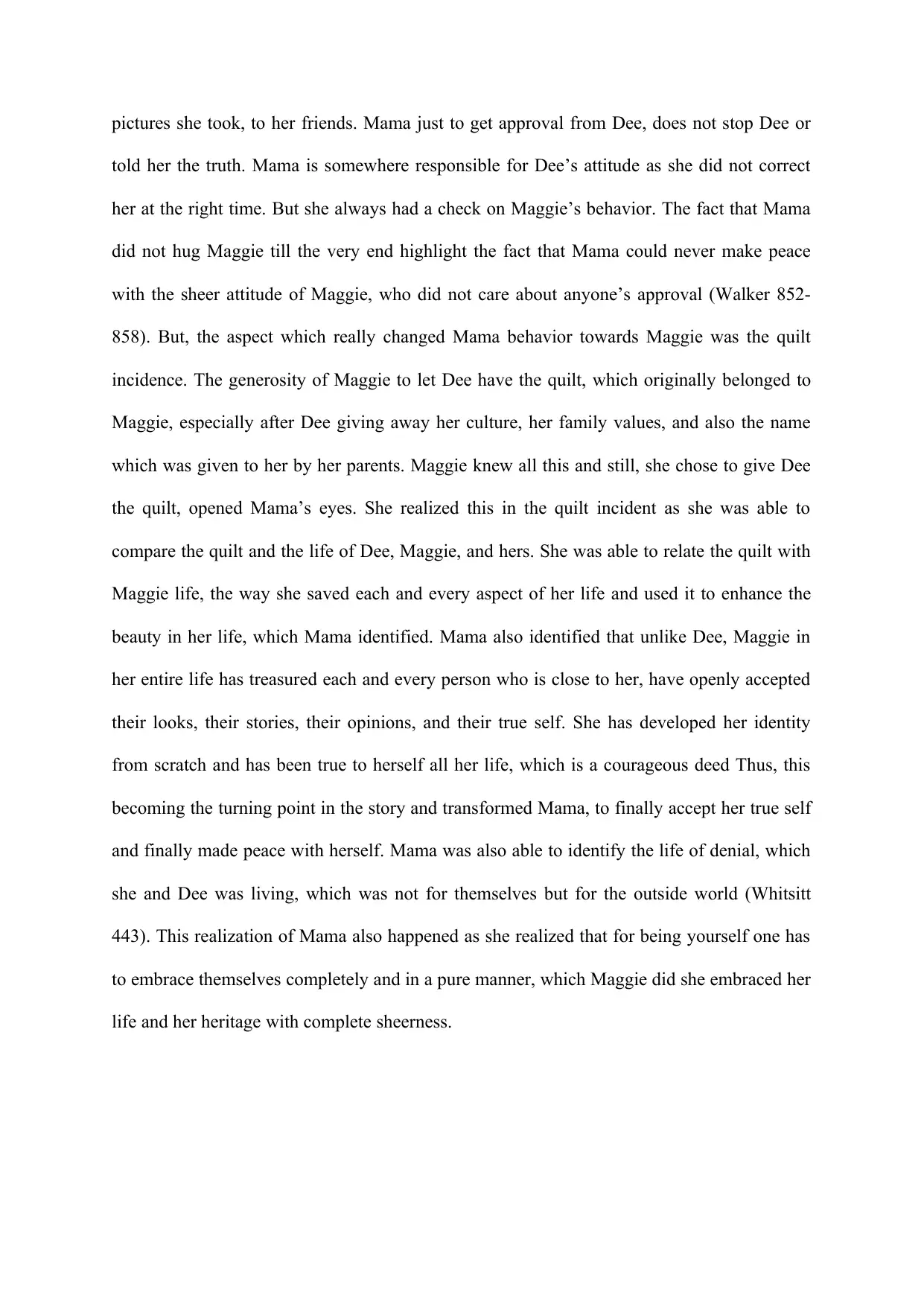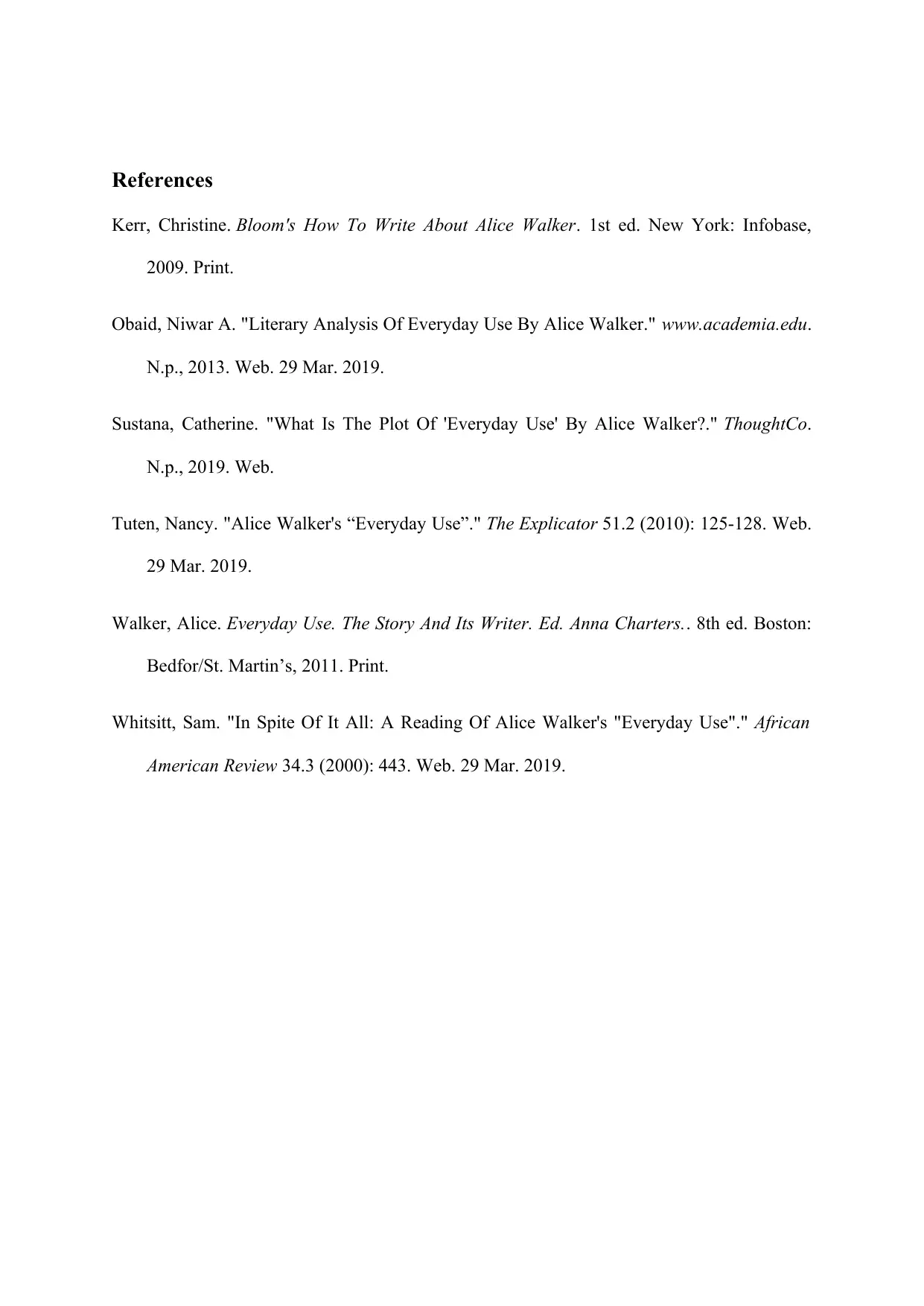Analysis of Mama's Character in Alice Walker's 'Everyday Use'
VerifiedAdded on 2023/04/11
|3
|878
|85
Essay
AI Summary
This essay provides a detailed analysis of Mama's character in Alice Walker's 'Everyday Use,' focusing on her complex relationships with her daughters, Dee and Maggie. The essay examines Mama's internal struggles with her own identity and her contrasting perceptions of her daughters, highlighting her initial preference for Dee's approval and her underestimation of Maggie's self-assuredness. The analysis explores the symbolism of the quilt as a turning point, revealing Mama's eventual acceptance of her true self and her recognition of Maggie's authentic connection to their heritage. The essay delves into themes of identity, family dynamics, and the contrast between superficial displays of culture and genuine appreciation. The essay also uses references from various authors to support the arguments made in the essay. Ultimately, the essay argues that Mama's transformation is a result of the quilt incident and her realization of the importance of embracing one's true self, as exemplified by Maggie's character, and the essay concludes with a reflection on Mama's journey toward self-acceptance and the rejection of societal expectations.
1 out of 3








![[object Object]](/_next/static/media/star-bottom.7253800d.svg)